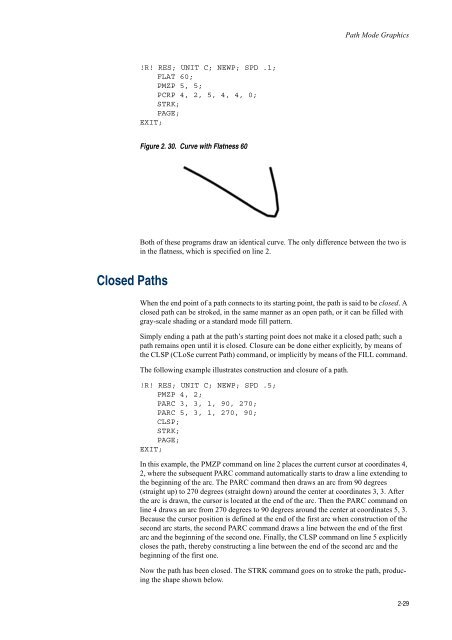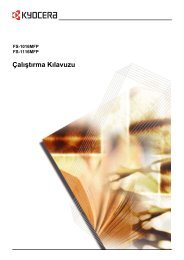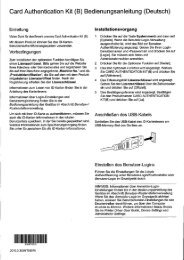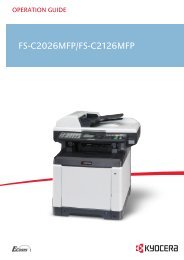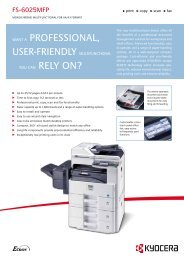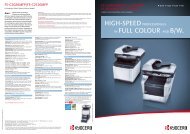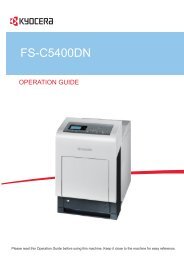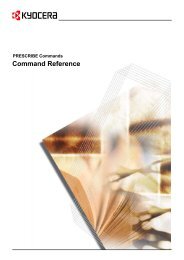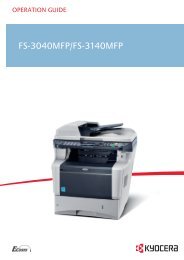Technical Reference - KYOCERA Document Solutions
Technical Reference - KYOCERA Document Solutions
Technical Reference - KYOCERA Document Solutions
You also want an ePaper? Increase the reach of your titles
YUMPU automatically turns print PDFs into web optimized ePapers that Google loves.
Closed Paths<br />
!R! RES; UNIT C; NEWP; SPD .1;<br />
FLAT 60;<br />
PMZP 5, 5;<br />
PCRP 4, 2, 5, 4, 4, 0;<br />
STRK;<br />
PAGE;<br />
EXIT;<br />
Figure 2. 30. Curve with Flatness 60<br />
Path Mode Graphics<br />
Both of these programs draw an identical curve. The only difference between the two is<br />
in the flatness, which is specified on line 2.<br />
When the end point of a path connects to its starting point, the path is said to be closed. A<br />
closed path can be stroked, in the same manner as an open path, or it can be filled with<br />
gray-scale shading or a standard mode fill pattern.<br />
Simply ending a path at the path’s starting point does not make it a closed path; such a<br />
path remains open until it is closed. Closure can be done either explicitly, by means of<br />
the CLSP (CLoSe current Path) command, or implicitly by means of the FILL command.<br />
The following example illustrates construction and closure of a path.<br />
!R! RES; UNIT C; NEWP; SPD .5;<br />
PMZP 4, 2;<br />
PARC 3, 3, 1, 90, 270;<br />
PARC 5, 3, 1, 270, 90;<br />
CLSP;<br />
STRK;<br />
PAGE;<br />
EXIT;<br />
In this example, the PMZP command on line 2 places the current cursor at coordinates 4,<br />
2, where the subsequent PARC command automatically starts to draw a line extending to<br />
the beginning of the arc. The PARC command then draws an arc from 90 degrees<br />
(straight up) to 270 degrees (straight down) around the center at coordinates 3, 3. After<br />
the arc is drawn, the cursor is located at the end of the arc. Then the PARC command on<br />
line 4 draws an arc from 270 degrees to 90 degrees around the center at coordinates 5, 3.<br />
Because the cursor position is defined at the end of the first arc when construction of the<br />
second arc starts, the second PARC command draws a line between the end of the first<br />
arc and the beginning of the second one. Finally, the CLSP command on line 5 explicitly<br />
closes the path, thereby constructing a line between the end of the second arc and the<br />
beginning of the first one.<br />
Now the path has been closed. The STRK command goes on to stroke the path, producing<br />
the shape shown below.<br />
2-29


